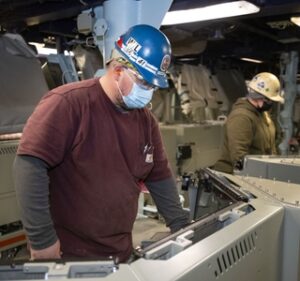
The Navy and its industry team for the first Flight III variant of the Arleigh Burke-class DDG 51 destroyers completed a major milestone of integrating an advanced radar and the Aegis combat system on the ship well ahead of schedule to ensure everything works as intended, an official with shipbuilder Huntington Ingalls Industries [HII] said this week. Aegis Light Off (ALO) on the future USS Jack H. Lucas (DDG 125) was completed in December, about 12 weeks ahead of schedule,…

 By
By 











